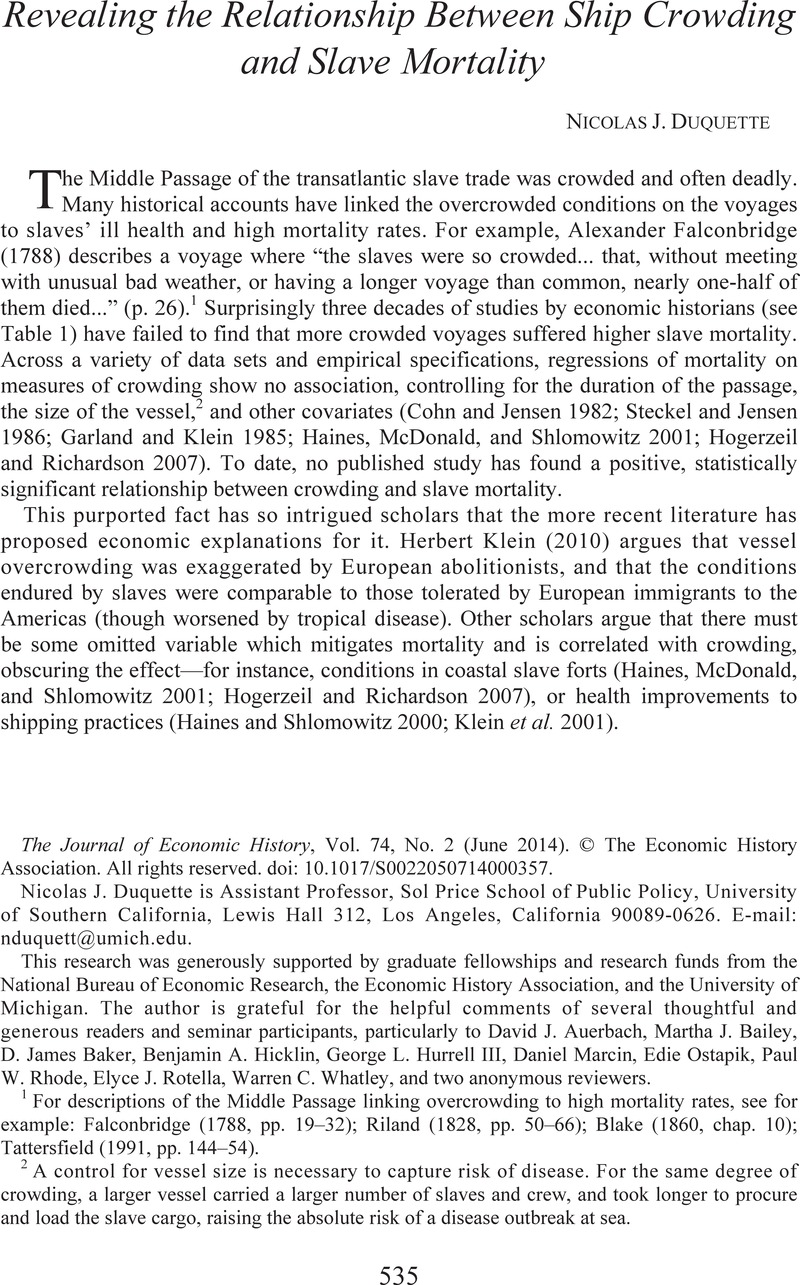Crossref Citations
This article has been cited by the following publications. This list is generated based on data provided by
Crossref.
Solar, Peter M.
and
Rönnbäck, Klas
2015.
Copper sheathing and the British slave trade.
The Economic History Review,
Vol. 68,
Issue. 3,
p.
806.
Dalton, John T.
and
Leung, Tin Cheuk
2015.
Being Bad by Being Good: Captains, Managerial Ability, and the Slave Trade.
SSRN Electronic Journal,
Solar, Peter M.
and
Duquette, Nicolas J.
2017.
Ship Crowding and Slave Mortality: Missing Observations or Incorrect Measurement?.
The Journal of Economic History,
Vol. 77,
Issue. 4,
p.
1177.
Sturgess, Gary L.
Rahman, Sara
and
Argyrous, George
2018.
Convict Transportation to New South Wales, 1787–1849: Mortality Rates Reconsidered.
Australian Economic History Review,
Vol. 58,
Issue. 1,
p.
62.
Arthi, Vellore
and
Fenske, James
2018.
Polygamy and child mortality: Historical and modern evidence from Nigeria’s Igbo.
Review of Economics of the Household,
Vol. 16,
Issue. 1,
p.
97.
Radburn, Nicholas
and
Eltis, David
2019.
Visualizing the Middle Passage: The Brooks and the Reality of Ship Crowding in the Transatlantic Slave Trade.
The Journal of Interdisciplinary History,
Vol. 49,
Issue. 4,
p.
533.
2021.
Reckoning with Slavery.
p.
1.
2021.
Reckoning with Slavery.
p.
29.
2021.
Reckoning with Slavery.
p.
55.
2021.
Reckoning with Slavery.
p.
170.
Rönnbäck, Klas
2021.
Were slaves cheap laborers? A comparative study of labor costs in the antebellum U.S. South.
Labor History,
Vol. 62,
Issue. 5-6,
p.
721.
2021.
Reckoning with Slavery.
p.
207.
2021.
Reckoning with Slavery.
p.
257.
2021.
Reckoning with Slavery.
p.
141.
2021.
Reckoning with Slavery.
p.
245.
2021.
Reckoning with Slavery.
p.
110.
Rose, Klaus
2022.
The COVID-19 Pandemic.
p.
141.
Blakley, Christopher M.
2022.
Ship fever, confinement, and the racialization of disease.
Studies in History and Philosophy of Science,
Vol. 95,
Issue. ,
p.
96.
Tinkelman, Daniel
2024.
‘Money does not stink’ – Accounting and slavery.
Accounting History,
Vol. 29,
Issue. 2,
p.
314.





